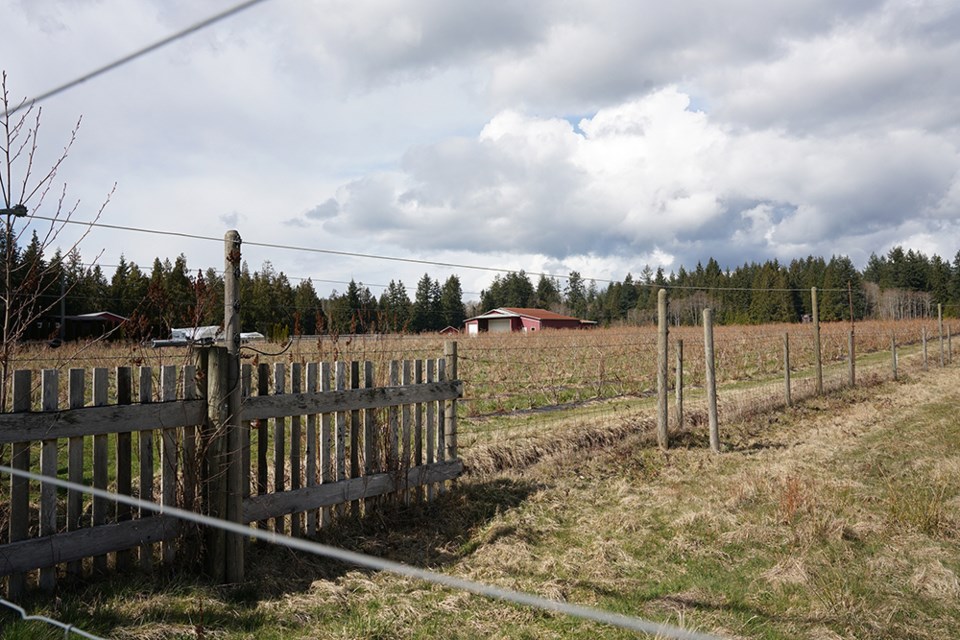City of Powell River councillors were provided an overview of agricultural land in BC and urged to support maintenance of the arable land base.
At the June 6 city council meeting, councillors heard a presentation from Reed Bailey from the provincial ministry of agriculture and food regarding land use planning for agriculture.
Bailey said agriculture is a significant contributor to BC’s economy and the sector is growing. He said farm cash receipts increased about $300 million from 2020 to 2021, for a total of $4.37 billion. He said the oil and gas sector in 2020 brought in $4.02 billion.
“The employment figures tell a similar story about the importance of agriculture to the provincial economy,” said Bailey. “About 31,000 people were employed in primary agriculture in 2022. This compares to 17,000 in forestry and logging, which has traditionally been viewed as the backbone of the province’s economy.”
Bailey said food security is more important than ever, with the United Nations reporting that the global food crisis is only getting worse.
“We should be doing everything we can to grow our own food,” said Bailey.
He said there are pressures on the agricultural land reserve (ALR) and farmland. Arable land in BC is limited and under a great deal of pressure, according to Bailey. Key pressures include: limited arable land, cost of ALR land, urbanization, housing, demographics and lack of industrial land.
Bailey said the ALR occupies less than five per cent of BC’s land base and 54 per cent is crown land. Seven per cent of the ALR is not available for farming.
The cost of farmland in BC continues to rise, according to Bailey, increasing by eight per cent in 2022, 18.1 per cent in 2021 and eight per cent in 2020. Agricultural land values in BC are the highest in Canada, going for an average of $139,000 per acre in the South Coast region, compared to $4,000 to $28,000 an acre in Ontario, said Bailey.
In terms of urbanization, BC is a great place to live and the population is growing, said Bailey.
The three high-growth population areas are the Lower Mainland, Okanagan and southern Vancouver Island, which is where 80 per cent of BC’s total farm receipts are generated, according to Bailey.
“There are lots of people in a relatively small area where all the best farmland is,” he added.
In terms of housing demands, people are looking to the ALR to solve the housing crisis, but Bailey said that is not what should be done. He said the ALR is reserved for agriculture.
“The ALR is not the solution to BC’s housing crisis,” said Bailey. “Nor is the ALR the solution to local government housing planning.”
In terms of demographics, Bailey said the average age of farmers keeps rising, with 57.8 years being the average in BC in 2021, meaning the province has the oldest farmers in the country.
“Depressingly, there are fewer young people getting into farming,” said Bailey. “This is a huge problem.”
Bailey said there are tools for local governments to help BC agriculture through land use planning.
“Through the Local Government Act, you can consider supporting agriculture with things like developing an agricultural advisory committee, and having more favourable tax and water rates for farmers,” said Bailey.
“Local government elected officials make a difference to support farmland, farmers and BC’s agricultural sectors.”
City councillor Rob Southcott asked about food security. Bailey said he did not know how much of BC’s produce is consumed domestically.
“The reality is that exporting crops is a huge benefit to BC farmers,” said Bailey. “I echo your concern about food security. I believe four per cent of what we eat on Vancouver Island is what is grown there, down from 65 per cent when the ALR was created. That’s something the ministry of cognizant of and resources are being devoted to that.”
Join the Peak's email list for the top headlines right in your inbox Monday to Friday.



